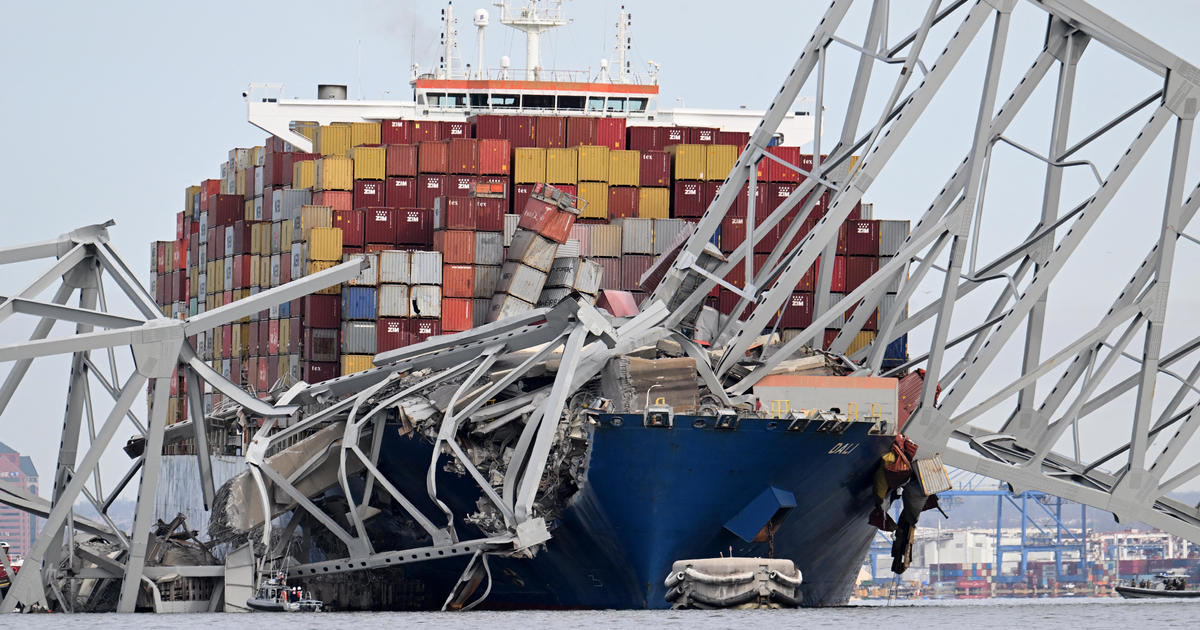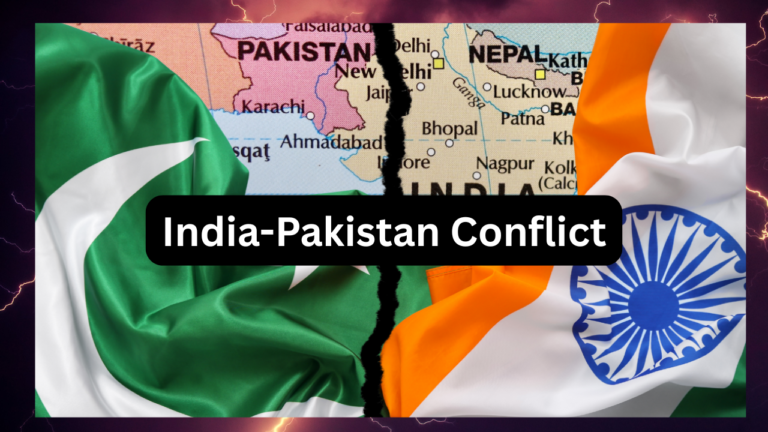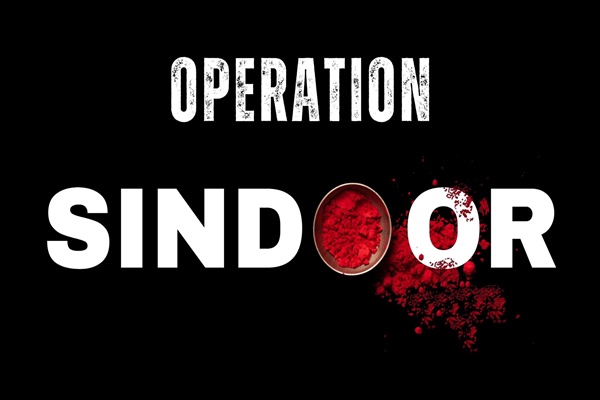
Tragic Collapse of the Baltimore Bridge
The Baltimore Harbor, usually a bustling hub of maritime activity, fell eerily silent in the pre-dawn hours of Tuesday. A nearly full moon cast an ethereal glow on the water, highlighting the silhouette of a colossal cargo ship, the MV Dali, dwarfed only by the imposing steel skeleton of the Francis Scott Key Bridge.
Then, chaos erupted. The Dali, its engines inexplicably silent, veered wildly off course, its massive hull bearing down on a central support pillar of the bridge. A citywide power outage, triggered by an equipment malfunction at a nearby substation, had plunged the area into darkness, leaving bridge control in the blind.
The impact was thunderous. Steel groaned under unimaginable pressure as the concrete pillar fractured, sending a shudder through the entire bridge.
In the control room, alarms blared as frantic engineers, working by the dim glow of emergency lights, grasped the horrifying reality. The bridge’s structural integrity was compromised. A section, precariously teetering, threatened to collapse into the churning waters of the Patapsco River below.
The recent catastrophic collapse of the Francis Scott Key Bridge in Baltimore has sent shockwaves through the city and beyond. This tragic event unfolded in the early hours of the morning when a massive cargo ship, the MV Dali, lost power and collided with one of the bridge’s support piers, leading to a devastating chain of events that resulted in the collapse of a significant portion of the bridge. The aftermath of this disaster has left six workers missing and presumed dead, highlighting the urgent need to reevaluate safety measures and infrastructure resilience in the face of evolving challenges.
A Race Against Time: Evacuating the Bridge
The seconds that followed were a blur of adrenaline-fueled action. Bridge control issued a desperate mayday, alerting emergency services and scrambling to activate the emergency traffic light system – a futile effort in the absence of power.
Meanwhile, on the Baltimore bridge itself, the few remaining vehicles, unaware of the impending disaster, continued their journeys. Highway patrol officers, alerted by the mayday call, raced towards the bridge, sirens wailing.
The officers, with the Baltimore bridge shrouded in darkness, knew they had mere minutes to act. Using their patrol cars’ spotlights, they formed a human barricade at the bridge entrance, desperately waving down oncoming traffic.
Thankfully, the pre-dawn hour meant lighter traffic than usual. Confused drivers, initially hesitant, eventually yielded, backing away from the looming danger. On the other side, officers at the bridge’s exit frantically directed stranded motorists to safety.
The Baltimore bridge collapse was triggered by a series of unfortunate circumstances. The MV Dali, a 300-meter-long container vessel weighing over 100,000 tonnes, suffered a complete blackout, losing both engine and electrical power just moments before the collision.
Despite the efforts of the local pilot to mitigate the situation by dropping anchor and attempting to steer the ship away from the bridge, the vessel struck one of the bridge’s pillars, leading to its catastrophic collapse.
Heroes Emerge from the Darkness
The selfless actions of these officers likely saved countless lives. One officer, Sergeant Maria Sanchez, recounted the harrowing experience: “It was pitch black, and people were understandably scared. But we just kept yelling, waving our flashlights, anything to get them to stop.”
Meanwhile, emergency personnel, converging on the scene, were met with a scene of devastation. The Baltimore bridge groaned ominously, and a sickening tilt became increasingly evident. Firefighters, with search dogs in tow, combed the Baltimore bridge on foot, ensuring no stranded motorists remained.
Coast Guard vessels were deployed, their searchlights illuminating the debris-strewn water, searching for anyone who might have fallen in the initial impact. Thankfully, no casualties were reported.
Structural Vulnerabilities and Safety Measures
The Francis Scott Key Bridge, constructed in the 1970s, was not designed to withstand the impact of a modern cargo ship of such immense size and weight. The protective measures in place, including concrete dolphins and a fender, proved insufficient to absorb the energy of the collision, ultimately resulting in the bridge’s collapse. This tragic incident underscores the need for continuous evaluation and enhancement of safety protocols to adapt to the changing landscape of maritime transportation.
A City Reeling in the Aftermath
As dawn broke, casting a pale light on the mangled bridge, the full scope of the disaster became tragically clear. A vital artery connecting the city’s east and west sides was severed. The economic impact was sure to be immense, with major transportation routes crippled.
The cause of the accident remained under investigation. Focus quickly turned to the MV Dali, which had sustained significant damage in the collision. Its captain, visibly shaken, was taken into custody for questioning.
The investigation would delve into the cause of the ship’s erratic course, whether it was a mechanical failure, human error, or something more sinister. The city’s power grid was also under scrutiny, with officials vowing a thorough investigation into the substation malfunction.
Rebuilding Baltimore: A Long Road Ahead
The Baltimore Bridge collapse was a stark reminder of the city’s vulnerability. The immediate focus was on ensuring public safety and establishing alternative routes for essential services. Temporary ferry routes were quickly established to provide some measure of connectivity across the Patapsco.
However, the long-term solution lay in rebuilding the Baltimore bridge. The question of who would bear the financial burden loomed large. The city, already grappling with budgetary constraints, braced for a long and expensive battle with the shipping company and potentially the federal government.
The emotional toll on the city was equally significant. The Baltimore bridge, a historic landmark and symbol of Baltimore’s resilience, lay in ruins. The sight of its twisted steel served as a constant reminder of the disaster, a wound that would take time to heal.
However, Baltimore, a city with a rich history of overcoming adversity, was determined to rebuild. A sense of solidarity and community spirit emerged in the wake of the tragedy. Residents rallied together, offering assistance and expressing their unwavering faith in the city’s ability to bounce back.
The collapse of the Baltimore Bridge was a defining moment in the city’s history. It was a story of heroism in the face of disaster, of quick thinking and selfless acts that prevented a far greater tragedy. It was also a story of resilience, a testament to the unwavering spirit of a city determined to rise from the ashes.
The days that followed were a whirlwind of activity. Engineers from across the country descended upon Baltimore, their expertise crucial in assessing the damage and formulating a plan for reconstruction. Temporary repairs were prioritized, aiming to restore a semblance of normalcy to traffic flow as quickly as possible.
Meanwhile, the investigation into the cause of the accident continued. Initial reports suggested a complete electrical failure on board the MV Dali, rendering its steering and propulsion systems inoperable. However, the possibility of sabotage or human error remained a cloud hanging over the investigation.
The captain of the MV Dali, a seasoned mariner with an unblemished record, maintained his innocence. He claimed a sudden and inexplicable loss of power, a narrative that seemed implausible to many. Scrutiny also fell on the shipping company, raising questions about maintenance protocols and potential cost-cutting measures that might have compromised the ship’s safety systems.
A City United: Picking Up the Pieces
As the weeks turned into months, the enormity of the task at hand became increasingly clear. Rebuilding the bridge was not simply a matter of replacing steel and concrete; it was about stitching together the fabric of the city itself.
Community forums were held, allowing residents to voice their concerns and suggestions. Local businesses, large and small, came together, offering support to those most affected by the disruption. A “Rebuild Baltimore” fund was established, attracting donations from across the country, a testament to the outpouring of national sympathy.
The city council, under immense pressure, navigated the complex legal and financial issues surrounding the bridge’s reconstruction. Negotiations with the shipping company proved contentious, with both sides digging in for a long legal battle.
A New Bridge, a New Chapter
Years passed, marked by construction milestones and ongoing legal battles. The temporary bridge repairs, initially meant to be a stopgap measure, began to show signs of wear and tear. Frustration mounted amongst residents, yearning for a permanent solution.
Finally, the day arrived. The new bridge, a marvel of modern engineering, stood proudly across the Patapsco River. A wider, sturdier design incorporated cutting-edge safety features, a testament to the lessons learned from the tragedy.
The dedication ceremony was a poignant affair. The families of those who narrowly escaped the collapse shared their stories of fear and gratitude. First responders, hailed as heroes, were honored for their bravery and quick thinking.
The new bridge, christened the “Phoenix Bridge,” symbolized Baltimore’s unwavering spirit. It was a bridge not just of steel and concrete, but of hope, resilience, and a renewed sense of community.
The scars of the disaster remained, etched in the collective memory of the city. Yet, the Phoenix Bridge served as a powerful reminder that even from the ashes of tragedy, a brighter future can emerge.






